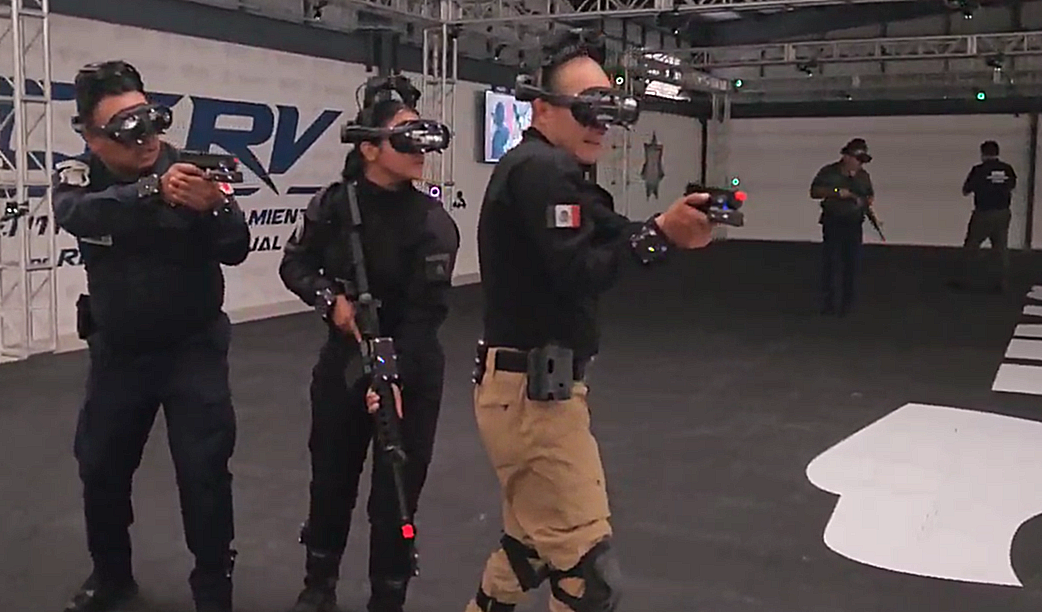Virtual Reality (VR) is transforming the learning and development landscape, particularly in sectors where high-stakes decisions and quick, informed actions are both advantageous and life-saving. Corporate training and law enforcement have harmoniously adopted VR to bridge the gap between theoretical knowledge and practical, real-world competency. This revolutionary shift in training methodologies is not just about leveraging cutting-edge technology; it’s about creating an immersive, memorable, and consequence-free space for learners to hone their skills.
In this comprehensive exploration, we’ll unveil VR’s profound impact on training, understand the intricacies that make it more effective than traditional methods, and provide insights into how your organization can integrate VR to unlock unprecedented skill enhancement.
The Advantages of VR Training over Traditional Methods
When we compare VR training with traditional methods, the merits of immersion, scalability, and data-driven insights come to the forefront. Traditional training often encapsulates classroom lectures, paper-based learning materials, and demonstration-based teaching. However, these conventional approaches have inherent limitations regarding engaging learners and providing authentic, hands-on experiences.
Immersive Learning
VR training immerses participants in a realistic, 3D environment that simulates real-world experiences. This immersion enhances the sense of “presence,” leading to increased engagement and retention of information. Participants can interact with their virtual surroundings, which makes learning more enjoyable and allows for a deeper level of understanding.
Scalability and Consistency
With VR, the limitation of scaling to accommodate many learners is virtually non-existent. It also ensures that all participants receive consistent training, as VR simulations can be designed to follow a standardized set of learning goals and outcomes.
Safe Practice Environment
In high-risk professions like law enforcement, creating a safe environment for trainees to make and learn from mistakes is critical. VR offers an ideal setting where participants can practice complex tasks and decision-making without real-world consequences, leading to safer, more skilled professionals.
Performance Assessment
VR training software has robust analytics that track and assess participants’ performance. This provides trainers with valuable data on areas where participants excel and those that require improvement, allowing for targeted and personalized instruction.
Real-World Applications of VR Training in Corporations and Law Enforcement
The applications of VR in training are diverse and impactful, with rapid adoption seen across different sectors. In the corporate world, VR is being used to simulate office environments, customer interactions, and even hazardous working conditions. These simulations are invaluable as they prepare employees for scenarios that are challenging to replicate in traditional training settings.
For law enforcement, VR opens the door to a world of simulated critical incidents, such as active shooter situations, de-escalation techniques, and crime scene investigations. The ability to practice and refine these skills in a controlled virtual space leads to better-equipped and more confident officers.
Case Studies: Success Stories of VR Training Implementation
Nothing speaks to the effectiveness of VR training quite like success stories. From international corporations to local police departments, the implementation of VR training has yielded impressive results. Consider the case of a multinational pharmaceutical company that used VR to train its global workforce in new product handling and emergency response procedures. The VR simulations not only reduced training time but also led to a significant decrease in accidents and errors.
Similarly, the New York Police Department (NYPD) incorporated VR training for its officers in active shooter scenarios, witnessing a marked improvement in response times and tactical decision-making skills. These case studies are inspiring testaments to the power of VR in fostering a culture of preparedness and excellence.
Overcoming Challenges in Adopting VR Training
While the benefits of VR training are compelling, the implementation can pose challenges. Primary among these are the costs of developing VR simulations and the initial learning curve for trainers and users. However, these challenges are not insurmountable.
Strategic planning, including phased implementation and partnerships with experienced VR developers, can help manage costs. Comprehensive training for instructors and a thoughtful integration plan for employees can greatly reduce the initial hurdles and ensure a smooth transition to VR-based learning.
The Future of Training: Predictions and Emerging Technologies
The trajectory of VR in training is only upwards. Emerging technologies are enhancing VR’s capabilities upwards, such as haptic feedback devices that provide a sense of touch in virtual environments and eye-tracking systems that allow for more in-depth analysis of participant behavior.
The possibilities are endless, and it’s not inconceivable to imagine a future where VR training is the norm across all sectors. This shift would signify a monumental leap in our thinking about learning and skill acquisition.
Embracing VR Training for Enhanced Learning and Development
Are you ready to leap into the immersive world of VR training? Whether you’re a corporate entity or a law enforcement agency, VR’s benefits are tangible, and the time to start is now.
Begin by defining your training objectives and exploring the various available VR solutions. Engage with your workforce to understand their needs and concerns and provide them with the support and resources necessary to make the transition to VR training seamless.
The possibilities with VR training are vast, and the potential for growth and improvement is limitless. Decide to invest in VR training, and watch as your organization’s learning and development programs reach new heights.



